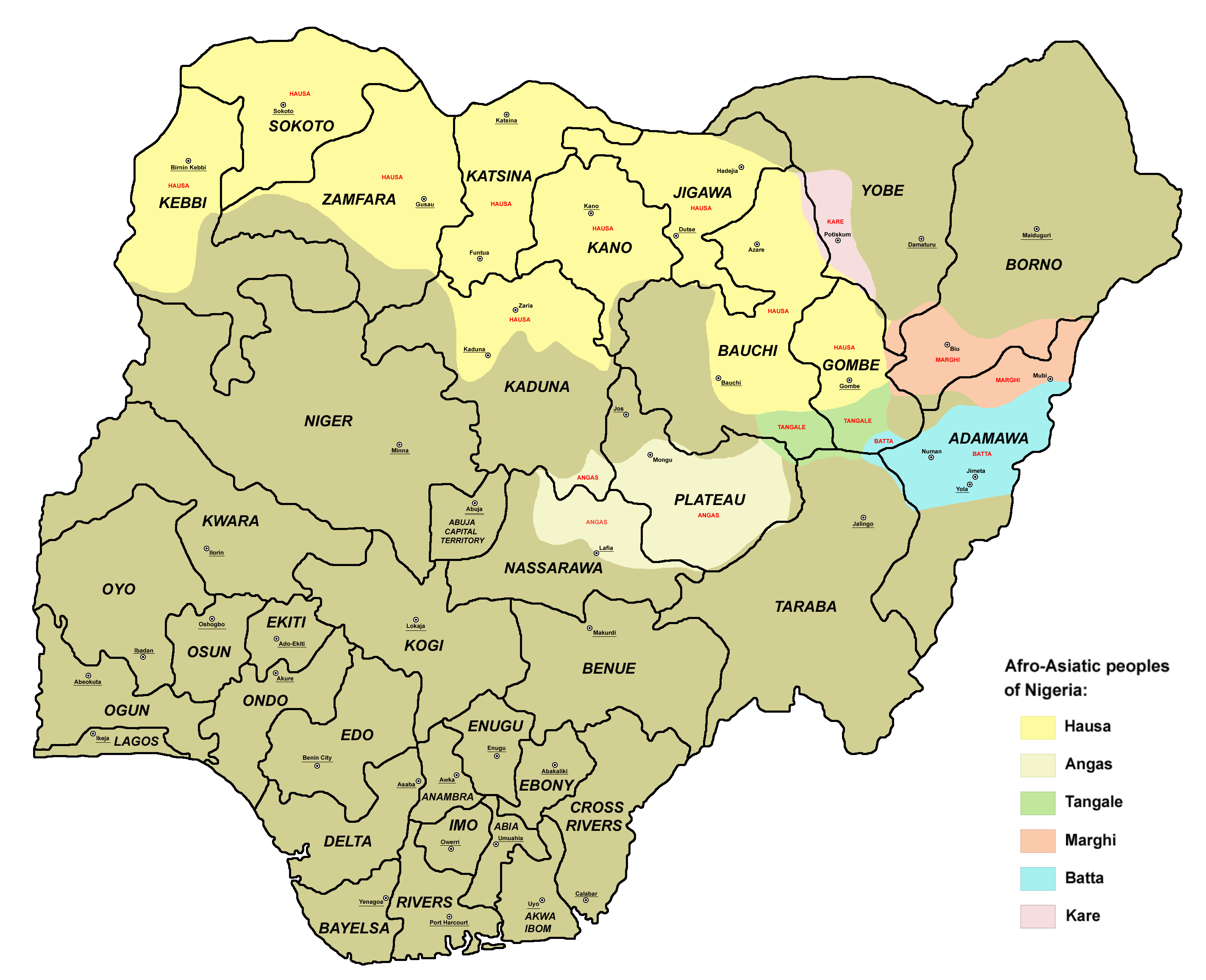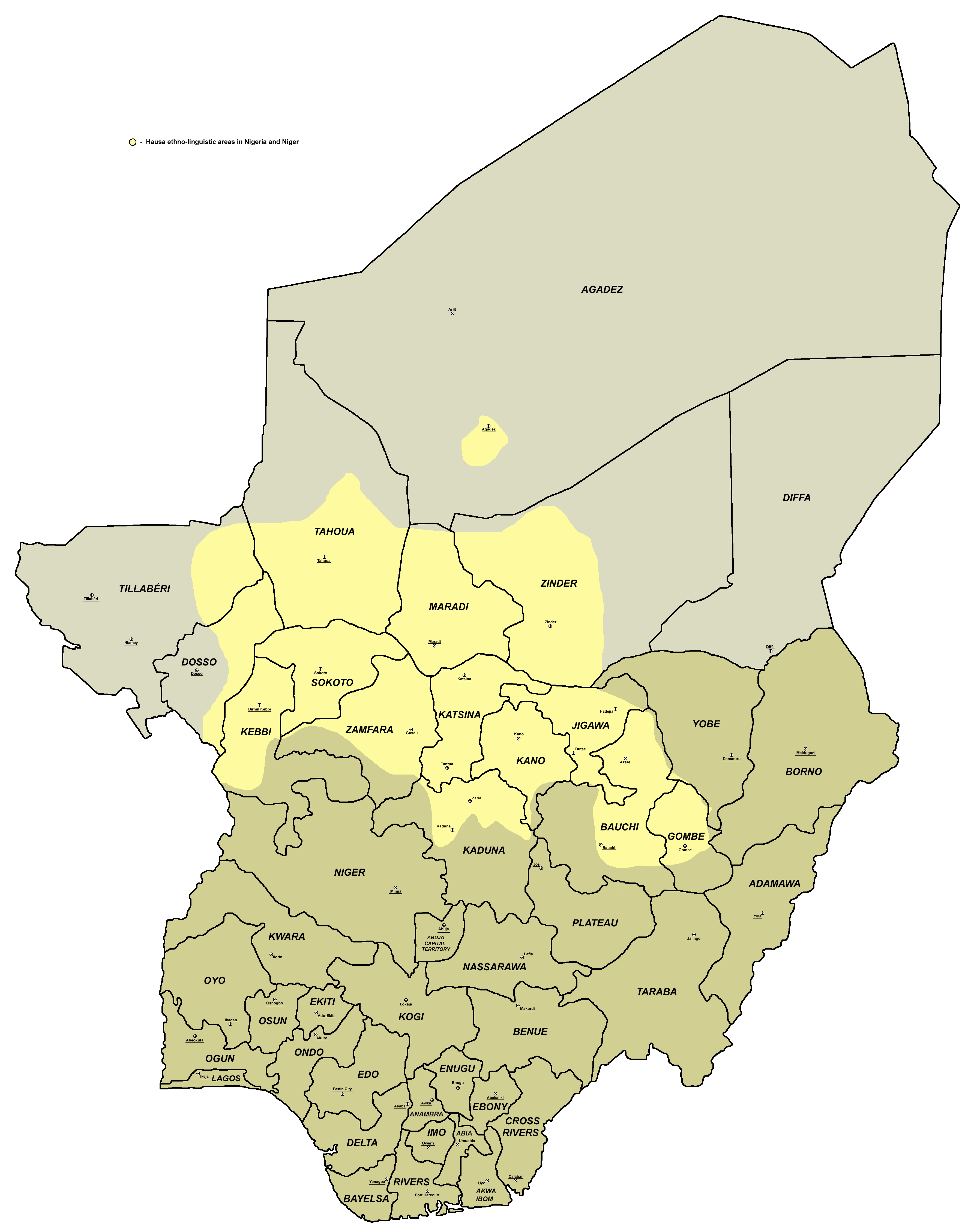|
Miship Language
Miship, or Chip, is an Afro-Asiatic language spoken in Plateau State, Nigeria. Doka is a dialect. Blench lists the two dialects ''Longmaar'' and ''Jiɓaam''.Blench, Roger. 2017Current research on the A3 West Chadic languages The Chip people are found in Pankshin Pankshin is a Local Government Area in Plateau State, Nigeria. Its headquarters are in the town of Pankshin. It has an area of 1,524 km and a population of 191,685 at the 2006 census. Pankshin is popularly known for its trade hub as most o ... LGA. People The traditional occupation of Chip people is farming. The people worship Na'an (God). Oral tradition states that they migrated from Kanem-Bornu to their present homeland with other tribes, Ngas, Mupun, and Mwaghavul. Most Chip names are unisex, so in order to differentiate a man from a woman, the prefix ''Na'' is added to the woman's name and ''Da'' is added to the man's. For example, for a man and a woman both sharing Nandi, the man would be Danan, and the w ... [...More Info...] [...Related Items...] OR: [Wikipedia] [Google] [Baidu] |
Nigeria
Nigeria ( ), , ig, Naìjíríyà, yo, Nàìjíríà, pcm, Naijá , ff, Naajeeriya, kcg, Naijeriya officially the Federal Republic of Nigeria, is a country in West Africa. It is situated between the Sahel to the north and the Gulf of Guinea to the south in the Atlantic Ocean. It covers an area of , and with a population of over 225 million, it is the most populous country in Africa, and the world's sixth-most populous country. Nigeria borders Niger in the north, Chad in the northeast, Cameroon in the east, and Benin in the west. Nigeria is a federal republic comprising of 36 states and the Federal Capital Territory, where the capital, Abuja, is located. The largest city in Nigeria is Lagos, one of the largest metropolitan areas in the world and the second-largest in Africa. Nigeria has been home to several indigenous pre-colonial states and kingdoms since the second millennium BC, with the Nok civilization in the 15th century BC, marking the first ... [...More Info...] [...Related Items...] OR: [Wikipedia] [Google] [Baidu] |
Plateau State
Plateau State is the twelfth-largest Nigerian state. It is in the centre of the country includes a range of hills surrounding the Jos Plateau, its capital, and the entire plateau itself. Plateau State is described as "The Home of Peace and Tourism". With natural formations of rocks, hills and waterfalls, it derives its name from the Jos Plateau and has a population of around 3.5 million people. Geography Adjacent states * Bauchi State – to the north east * Kaduna State – to the north west * Nasarawa State – to the south west * Taraba State – to the south east Boundaries Plateau State is located in the North Central Zone out of the six geopolitical zones of Nigeria. With an area of 26,899 square kilometres, the state has an estimated population of about three million people. It is located between latitude 8°24' N and 10°30' N and longitude 8°32' E and 10°38' E. The state is named after the Jos Plateau, a mountainous area in the north of the sta ... [...More Info...] [...Related Items...] OR: [Wikipedia] [Google] [Baidu] |
Chadic Languages
The Chadic languages form a branch of the Afroasiatic language family. They are spoken in parts of the Sahel. They include 150 languages spoken across northern Nigeria, southern Niger, southern Chad, the Central African Republic, and northern Cameroon. The most widely spoken Chadic language is Hausa, a ''lingua franca'' of much of inland Eastern West Africa. Composition Paul Newman (1977) classified the languages into the four groups which have been accepted in all subsequent literature. Further subbranching, however, has not been as robust; Roger Blench(2006), for example, only accepts the A/B bifurcation of East Chadic. Kujargé has been added from Blench (2008), who suggests Kujargé may have split off before the breakup of Proto-Chadic and then subsequently became influenced by East Chadic. Subsequent work by Joseph Lovestrand argues strongly that Kujarge is a valid member of East Chadic. The placing of Luri as a primary split of West Chadic is erroneous. Bernard Caron (200 ... [...More Info...] [...Related Items...] OR: [Wikipedia] [Google] [Baidu] |
West Chadic Languages
The West Chadic languages of the Afro-Asiatic family are spoken principally in Niger and Nigeria. They include Hausa, the most populous Chadic language and a major language of West Africa. Languages The branches of West Chadic go either by names or by letters and numbers in an outline format. * Hausa–Gwandara (A.1): Hausa, Gwandara *Bole–Angas (?) ** Bole–Tangale (A.2) ***North (Bole proper): Bure, Karekare, Bole, Gera, Geruma, Deno, Galambu, Giiwo, Kubi, Ngamo, Maaka (Maagha), Ɓeele, Daza (Dazawa), ?Pali ***South (Tangale): Kwaami, Pero, Piya-Kwonci, Kholok, Nyam, Kushi (Goji), Kutto (Kupto), Tangale, Dera (Kanakuru) ** Angas ( Central West Chadic) (A.3)Blench, Roger. 2017Current research on the A3 West Chadic languages ***Ngasic: Ngas (Angas), Belnəng ***Mwaghavulic: Mwaghavul, Mupun (Mapun), Takas (Toos); Cakfem-Mushere *** Miship (Chip) ***Pan cluster **** Chakato/Jorto **** Jipal, Mernyang (Mirriam), Kwagallak, Kofyar (Doemak), Bwol, Gor ... [...More Info...] [...Related Items...] OR: [Wikipedia] [Google] [Baidu] |
Bole–Angas Languages
The West Chadic languages of the Afro-Asiatic family are spoken principally in Niger and Nigeria. They include Hausa, the most populous Chadic language and a major language of West Africa. Languages The branches of West Chadic go either by names or by letters and numbers in an outline format. * Hausa–Gwandara (A.1): Hausa, Gwandara *Bole–Angas (?) ** Bole–Tangale (A.2) ***North (Bole proper): Bure, Karekare, Bole, Gera, Geruma, Deno, Galambu, Giiwo, Kubi, Ngamo, Maaka (Maagha), Ɓeele, Daza (Dazawa), ?Pali ***South (Tangale): Kwaami, Pero, Piya-Kwonci, Kholok, Nyam, Kushi (Goji), Kutto (Kupto), Tangale, Dera (Kanakuru) ** Angas ( Central West Chadic) (A.3)Blench, Roger. 2017Current research on the A3 West Chadic languages ***Ngasic: Ngas (Angas), Belnəng ***Mwaghavulic: Mwaghavul, Mupun (Mapun), Takas (Toos); Cakfem-Mushere *** Miship (Chip) ***Pan cluster **** Chakato/Jorto **** Jipal, Mernyang (Mirriam), Kwagallak, Kofyar (Doemak), Bwol, Goram, ... [...More Info...] [...Related Items...] OR: [Wikipedia] [Google] [Baidu] |
Angas Languages
The Angas, Angas–Sura, or Central West Chadic languages (also known as A.3 West Chadic) are a branch of West Chadic languages spoken in Plateau State, north-central Nigeria. Languages The Angas languages are:Blench, Roger. 2017Current research on the A3 West Chadic languages ;Angas *Ngasic: Ngas (Angas), Belnəng; ? Miler *Mwaghavulic: Mwaghavul, Mupun (Mapun), Takas (Toos); Cakfem-Mushere * Miship (Chip) *Pan cluster ** Chakato; Jorto (spurious) ** Jipal, Mernyang (Mirriam), Kwagallak, Kofyar (Doemak), Bwol, Goram, Jibyal * Nteng *Tel (Tɛɛl, Montol) *Talic: Tal, Pyapun, Koenoem *Goemaic: Goemai * Yiwom (Ywom, Gerka) Note that in the language names, orthographic '' oe'' stands for the mid central vowel ə, a practice that had been adopted by missionaries in the Shendam area during the 1930s, such as Father E. Sirlinger. Unlike many other West Chadic languages, Angas languages do not have complex nominal and verbal morphology. Ywom is the most divergent language.B ... [...More Info...] [...Related Items...] OR: [Wikipedia] [Google] [Baidu] |
Afro-Asiatic Languages
The Afroasiatic languages (or Afro-Asiatic), also known as Hamito-Semitic, or Semito-Hamitic, and sometimes also as Afrasian, Erythraean or Lisramic, are a language family of about 300 languages that are spoken predominantly in the geographic subregions of Western Asia, North Africa, the Horn of Africa, and parts of the Sahara/Sahel. With the exception of its Semitic branch, all branches of the Afroasiatic family are exclusively native to the African continent. Afroasiatic languages have over 500 million native speakers, which is the fourth-largest number of native speakers of any language family (after Indo-European, Sino-Tibetan, and Niger–Congo). The phylum has six branches: Berber languages, Berber, Chadic languages, Chadic, Cushitic languages, Cushitic, Egyptian language, Egyptian, Semitic languages, Semitic, and Omotic languages, Omotic. The most widely spoken modern Afroasiatic language or dialect continuum by far is Arabic, a ''de facto'' group of Varieties of Arabi ... [...More Info...] [...Related Items...] OR: [Wikipedia] [Google] [Baidu] |
Pankshin
Pankshin is a Local Government Area in Plateau State, Nigeria. Its headquarters are in the town of Pankshin. It has an area of 1,524 km and a population of 191,685 at the 2006 census. Pankshin is popularly known for its trade hub as most of the people are farmers growing a vast range of food crops such as millet, guinea corn, maize, tomatoes, rice, onions, cabbage, carrot and collections of fruits. Mondays in Pankshin is specifically for trading – buying and selling, hence the name "Monday market" as traders, merchants and people in the environs and as far as away as Bauchi come to buy and sell. The postal code A postal code (also known locally in various English-speaking countries throughout the world as a postcode, post code, PIN or ZIP Code) is a series of letters or digits or both, sometimes including spaces or punctuation, included in a postal a ... of the area is 933. Language and tribes Situated amidst people with diverse cultures, Pankshin inhabitants speak ... [...More Info...] [...Related Items...] OR: [Wikipedia] [Google] [Baidu] |
Languages Of Nigeria
There are over 525 native languages spoken in Nigeria. The Nigerian official language is English, the language of former colonial British Nigeria. As reported in 2003, Nigerian Pidgin was spoken as a second language by 60 million people in Nigeria. The major native languages, in terms of population, are Hausa (over 80 million when including second-language, or L2, speakers), Yoruba (over 50 million including L2 speakers), Igbo (over 30 million, including L2 speakers), Efik-Ibibio cluster (over 15 million), Fulfulde (13 million), Kanuri (8 million), Tiv (5 million), Nupe (3 million) and approx. 2 to 3 million each of Karai-Karai Kupa, Kakanda, Edo, Igala, Idoma and Izon. Nigeria's linguistic diversity is a microcosm of much of Africa as a whole, and the country contains languages from the three major African language families: Afroasiatic, Nilo-Saharan and Niger–Congo. Nigeria also has several as-yet unclassified languages, such as Centúúm, which may represent a r ... [...More Info...] [...Related Items...] OR: [Wikipedia] [Google] [Baidu] |




